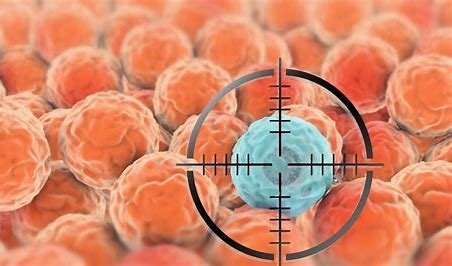Patients can now benefit from same-day procedure to diagnose and treat lung cancer
22 February 2022 | Tuesday | News

Image Source : Public Domain
Imagine being diagnosed with lung cancer and having the tumor surgically removed on the same day, thereby increasing the opportunity for limited follow-up therapy – or even curing the cancer. A team of pulmonary and thoracic experts at MedStar Georgetown University Hospital are the first in the region to combine these two steps, thus saving precious time for patients in addressing the "beast of all cancers," according to Eric D. Anderson, MD, director of Interventional Pulmonology at MedStar Georgetown University Hospital.
"Coupling this early diagnosis with same-day surgery for lung cancer is a win for patients," said Dr. Anderson. "Given the impact of lung cancer – the leading cause of cancer deaths -- this is a major step towards stopping the disease in its tracks, resulting in better outcomes and giving patients an improved chance at life."
In this new approach – Combined Robotic Assisted Thoracic Surgery (CRATS) – high-risk lung cancer patients first undergo a low dose CT scan of the lung to monitor for tumors. If a tumor is detected, the Ion robot bronchoscope is used to biopsy the lung tumor. If the lung tumor is found – through real-time biopsy – to be cancer, then the endobronchial ultrasound is used to determine if the cancer has spread to lymph nodes. If the lymph nodes are normal, then the patient undergoes surgery to remove the portion of the lung with the cancerous tumor using the DaVinci robotic video-assisted thoracic surgery system during the same anesthesia procedure. This new process – diagnosing lung cancer and removing the tumor at the same time -- saves valuable time by removing the cancer right when it is detected, thereby limiting the opportunity for spread of disease and allowing for the start of additional therapies sooner if needed. In some instances, this approach can be curative of the cancer.
B-roll of CRATS procedure and interview with Eric Anderson, MD
"Millimeters matter," says Dr. Anderson. "We know that the earlier we find the nodule in the lung and the smaller it is, that has the greatest impact on mortality. If we find the nodule at 1 mm, there is 90% chance of survival. At 2 mm, there is 80%, and at 3 mm 70%. Combine those odds with the potential immediate removal of the tumor, and the Ion robot gives patients a real chance for better outcomes."
Previously this process of diagnosis and treatment could take several weeks -- a critical time when cancer can continue to grow, and patients can experience increased anxiety about their health and prognosis.
"This combined therapy of diagnosis and surgical removal of the tumor at the same time offers new hope for patients with lung cancer," said Dr. Marc Margolis, Chief of Robotic Thoracic Surgery at Medstar Georgetown University Hospital, "Removing a cancerous tumor in the lung, when possible, is key to advancing the opportunity for improved outcomes for these patients. The earlier we can remove the cancer, the sooner we can help our patients with any additional therapies they may need to move forward with their life."
Wayne Norris, 67, had the low dose CT lung screen that indicated a tumor. He was immediately scheduled for the combined procedure in the event the tumor was cancer.
"We feel blessed not to have had to wait for biopsy and to schedule surgery. It was a relief to get this all taken care of at one time and get the cancer out," said Norris, whose tumor was diagnosed as cancer and removed immediately.
Most Read
- How Health Systems Are Reshaping Drug Adoption, Partner Models, and Market Access in 2026
- Top 25 Biotech Innovations Redefining Health And Planet In 2025
- The New AI Gold Rush: Western Pharma’s Billion-Dollar Bet on Chinese Biotech
- Top 25 Biotech & Biopharma Leaders in Sustainable Innovation, 2025
- China’s Biopharma Dealmaking Surges in H1 2025, Driven by Record Licensing and Oncology Focus
- Chikungunya in China: How a “Forgotten” Arbovirus Found the Perfect Storm
- How Innovation Gaps in Biopharma Raise New Safety Concerns
- Smart Implants and the Future of Musculoskeletal Injury Treatment
- How Ethical Gaps in Psychiatry Could Undermine Biopharma Progress
- The Evolving Landscape of Women’s Health Innovation in the Asia-Pacific
- Using NLP-Driven Decision Support in Emergency Health Assistance
- Taiwan Steps Into the Global Spotlight With a New Cancer Therapy
- The Role of Unique Device Identification (UDI) in Tracing Medical Device Safety
- The Importance of a Patient’s Mental Health During Clinical Trials
Bio Jobs
- The State of Biotech and Life Science Jobs in Asia Pacific – 2025
- Avantor’s New CEO Ligner Aims to Unlock Global Potential and Deliver Shareholder Value
- AstraZeneca Commits $50 Billion to U.S. Expansion by 2030 in Biggest-Ever Global Investment
- Thermo Fisher, SAMRC, and South Africa’s Department of Science and Innovation Launch CATIR to Nurture Next-Gen Scientists
- Cube Biotech Appoints Former Sartorius CEO Dr. Joachim Kreuzburg to Board of Directors
- FDA’s AI Transition Marks a Turning Point in Drug Review: Industry Faces Pressure to Adapt Amid 20% Workforce Cut
- WuXi XDC Completes Mechanical Build of Singapore Bioconjugate Manufacturing Hub
News
Editor Picks











